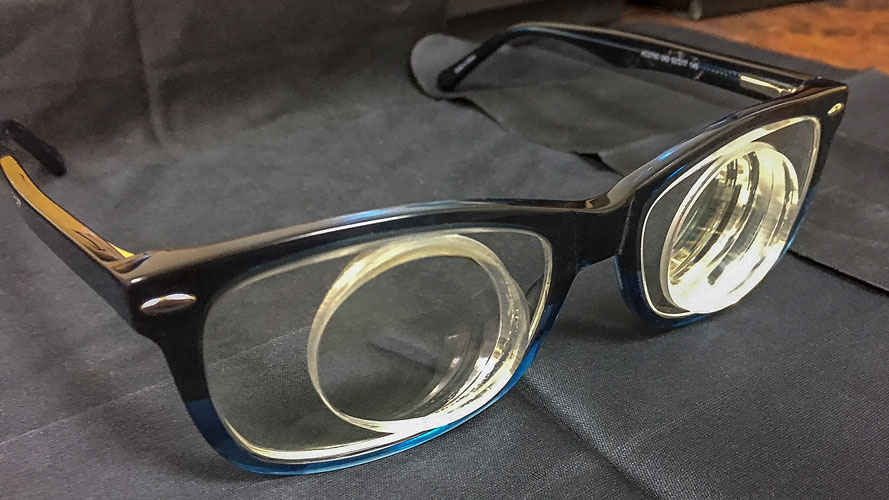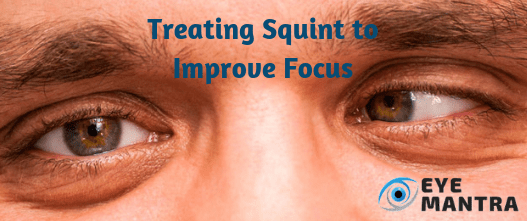A squint, or strabismus, is an eye treatment required to cure a condition in which the eyes do not align properly. One eye focuses at one spot, while the other one turns inwards, upwards, downwards, or outwards. Or you can say, both eyes are unable to look and focus at the same spot at the same time.
It can be permanent or occur intermittently.
This usually happens because the extraocular muscles, the ones that control the movement of the eye and the eyelid, do not work together. Or it can be due to a disorder in the brain means that the eyes cannot correctly coordinate.
Strabismus also makes the binocular vision and looking from 3D specs impossible, so it is harder for the person to appreciate depth perception.
It is estimated to affect around 4 % of the world’s population.
Though it is far more common in children and may be associated with amblyopia or lazy eye. Still, squint surgery may also be required by the adults, when it can either be a recently acquired squint or a persisting condition since childhood.
When the squint eye treatment is required by adults, it is generally called Adult Strabismus.
Contents
Effects of Squint
Many can also affect one’s quality of life and the ability to operate in and outside of the home. One of the vision losses is the loss of depth perception. Or the perception of distance becomes impossible.
It can affect the daily chores in life in many different ways such as :
- An inability to determine how far away an object is making driving unsafe,
- The inability to separate the curb from the sidewalk,
- Difficulty in navigating stairs or missing a step,
- Deciding how much water to pour into a glass or coffee in a cup.
Not only does decreasing depth perception lead to frustration and anger, but such patients are at high risk of falls and accidents. Loss of depth perception becomes more prominent when there is less visual contrast between the things we are looking at. Two healthy functioning eyes working together are necessary for good depth perception. So even if you have one good eye, loss of depth perception is decreased. While this vision loss can’t be completely avoided there are some strategies and vision aids one can use to help neutralize.
Why do Adults get Squint
Adults may have squint eyes either since their childhood or they may acquire this condition in adulthood. New squint that develops in an adult can result from conditions such as:
- Diabetes,
- Brain tumors,
- Head trauma,
- Strokes,
- Thyroid disease,
- Myasthenia,
- If one eye loses vision, the other eye may show some deviation in its focus,
- A hidden childhood squint may become prominent due to work strain in the eyes at later stages of life,
- Sometimes, an identifiable cause can not be determined for the squint. Such conditions are called Idiopathic,
- Sometimes, misalignment of the eyes can also occur after some surgery on or around the eye, such as retina surgery or cataract surgery. Such cases happen when the eye muscles get damaged during surgery.
Symptoms of Squint in Adults
Adults that need squint eye treatment may experience:
- Double vision,
- Overlapped or blurred images,
- Eye fatigue,
- A pulling sensation around the eyes,
- Reading difficulty,
- Loss of depth perception.
To correct the weakness of focusing at one point properly, many adults have to tilt or turn their heads when focusing. They are also unable to make and keep direct eye contact with both eyes when looking at people. It makes socializing awkward. Therefore, these symptoms may hurt employment and social opportunities.
Squint Eye Treatment for Adults
Squints in adults can be treated using various methods. The treatment of squint eye depends on severity and management. And the options range from observation to surgery. We are giving a brief for 3 options here:
Eye muscle exercises
Muscle exercises can help treat a form of squints in adults in which the eyes cannot align themselves for close work or reading. This condition is called convergence insufficiency. The eye exercises are especially useful in such a condition.
Nearby work requires you to point both the eyes inward on close objects such as books, a needle, and thread, or computer screens. The coordinated action and inward focusing of the eyes are called convergence. You can try some Convergence Exercises at home, to help retrain the eyes to focus inward together. However, eye muscle exercises are rarely beneficial in other cases of squints in adults.
Prism eyeglasses

Eyeglasses with prisms can correct mild squint associated with double vision in adults. A prism is a clear, wedge-shaped lens that bends, or refracts, rays of light. When worn by an adult who has squints and mild double vision, the prism eyeglasses realign images together so that the eyes see only a single image.
The prisms can be clipped outside the eyeglass frames or can be built directly into the lens itself.
These special prism glasses are effective in taking care of mild to moderate squint and double vision. Often, adult-onset squint tends to resolve itself with time. Therefore the doctors prefer to use these to keep the patient comfortable meanwhile.
Usually, the prism eyeglasses do not correct more severe cases of double vision where images are far apart or double vision is caused by weak or tight muscles.
Eye muscle surgery
Eye muscle surgery is the most common way to squint eye treatment and is highly specialized surgery. Typically, squints occur when the eye muscles are either too stiff or too weak. Eye Doctors surgically loosen, tighten or reposition selected eye muscles on one or both eyes. So the eyes can be rebalanced to work together and the alignment is restored.
This Squint Surgery helps the eyes to combine the image from both eyes. It works both, as a cosmetic and functional cure.
Benefits of Squint Treatment Surgery in Adults
Most people feel that squint surgery in adults is strictly taken for cosmetic reasons. However, that is usually not true. The operation can result in a significant functional benefit. It causes:
- Reduce or eliminate double vision,
- Improvement in eye alignment, making the vision straight,
- Improve or restore the use of both eyes together (binocular optical function),
- Remove, or at least reduce significantly, diplopia or double vision,
- Provide a definite cosmetic growth,
- Improve social and professional possibilities,
- Expand peripheral vision,
- Reduce eye strain fatigue.
How Successful is Eye Muscle Surgery in Adults?
Many adult patients are under the misconception that nothing can be done to correct the problem. Or that squint treatment comes with a high degree of risk. Moreover, many ophthalmologists and primary care physicians may be similarly misinformed.
While the actual fact is that most adult patients can be successfully treated. And an approximate 80% of the surgeries are successful, resulting in satisfactory alignment with one surgical procedure. Also, it carries a relatively low risk, with serious complications being rare.
Most patients experience a striking improvement in alignment and focus, with the first surgery itself. Whether they require an additional surgical procedure or not depends on the type and severity of the squint. For some patients, a little squint remaining may be cosmetically acceptable or corrected by using prism glasses.
In case the squint is one which was acquired in childhood and is associated with amblyopia or lazy eye, then the results are less predictable. For such cases, the squint correction may reverse, or there may be changes in ocular alignment over some time after a surgery which was successful initially.
In any case, your doctor will discuss the risks and benefits of squint surgery for your specific situation and help you reach a decision.
Although adult strabismus surgery is highly cost-effective, many adults with strabismus can be successfully managed by non-surgical means.
Risks of Strabismus Surgery
Risks associated with local anesthesia are quite rare. Still, some infections like diminished brain function, pneumonia or death can be associated with anesthesia. Risks of surgery include loss of vision, bleeding, retinal detachment or infection. But the occurrence of such complications is highly unusual.
The eyes may not get straight after the surgery and prism glasses. Or another surgery may be required. Bleeding under the conjunctiva would give the eye a red appearance for a week to a month, Scratch or abrasion to the cornea, reaction to the sutures, pain, or scar development including cyst formation can occasionally occur.
The chance of any serious complication from the squint surgery that could affect the sight or well-being of the eye is exceedingly rare. However, there are risks with any surgery, including:
- Sore eyes,
- Bleeding,
- Infection,
- Redness,
- Residual misalignment,
- Double vision,
- Corneal abrasion,
- Decreased vision,
- Retinal detachment,
- Anesthesia-related complications.
Extreme bleeding and infection are possible risks in any type of surgery. You are advised to follow your doctor’s instructions regarding blood-thinning medications before the procedure, to reduce your risk for heavy bleeding. Keeping your incisions dry and clean will help prevent an infection from occurring.
Am I too old to get my Squint Treated?
As an adult with a squint, you may have been told in the past that it cannot be improved. This is utterly not true. In most cases, eye muscle surgery is a successful, safe, and effective squint eye treatment for adults of all ages. In fact, it is never too late for surgery.
Besides the misaligned eyes being corrected, treatment can restore binocular vision and even improve the peripheral vision in some cases. Post-surgery many patients realize how much it affected their self-confidence. Finally, they can get rid of those heavy prism glasses or patches that they’ve been struggling with and look someone in the eye.
Even if you are in your 70’s or 80’s, you should discuss this with your eye specialist. Squint eye treatment surgery can be performed at any age. The only contraindications to surgery are any associated illnesses that can impact its safety in the elderly. For most people, the operation is extremely safe and effective. Causing a dramatic improvement in the quality of life of the patient.
Also check Eye Care Tips for the Elderly
Final Analysis
Squint Treatment Surgery is usually performed on an outpatient basis using local anesthesia mostly. You may experience some pain or discomfort after the surgery, but, usually, it is not severe and can be treated with paracetamol. Medication that can be easily purchased over-the-counter. Stronger medicines for pain, such as codeine or hydroquinone, may sometimes be required and will be prescribed by your eye specialist. You can often return to your routine activities within a few days.
If an adult with a squint is under the impression or was told that they cannot be treated, or that the treatment is risky, they should consider an eye hospital Delhi specializing in strabismus, such as Eyemantra.
To book an appointment call at +91-8851044355. Or mail us at eyemantra1@gmail.com.
Our other services include Glaucoma Surgery, Specs Removal, Computer Vision Syndrome, and many more.
Related Articles:
Best Tips for Eye Care in Pollution



